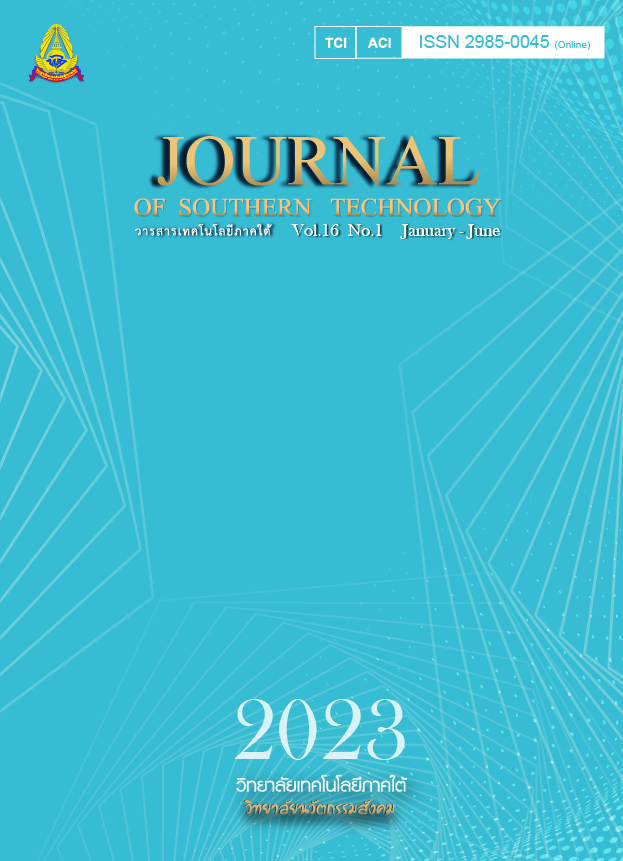Factors Predicting Household Behaviors on Management of Solid Waste Reduction by PAKHAYO Ethnic Group in Mae Hong Son, Thailand
Main Article Content
Abstract
Solid waste is a reservoir of germs and causes pollution problems in the community. To successfully reduce household waste, people need to be aware of benefits of reducing waste, barriers to reducing waste as well as potential health risks that may arise if waste is increasingly accumulated. This research uses a descriptive research model which aims to study common factors that predict household behaviors on management of solid waste by the Pakhayo ethnic group (Pakhayo) in Mae Hong Son, Thailand. A sample of 211 people was selected using multistage random sampling method. The research instrument used to collect data in this research was a questionnaire. Descriptive statistics were analyzed for frequency, percentage, mean and standard deviation. For inferential statistics, the relationship between factors was analyzed by Pearson's correlation coefficient and variables that define a stepwise multiple regression analysis. The results of the research show that age, the highest level of education, income, knowledge, attitude, participation, reducing solid waste, sorting of solid waste, and utilization of solid waste has a positive correlation with the household behavior on solid waste management of the community statistically significant (p < .05) (r= .497, .493, .339, .339, .680, .576, .882, .901 and .929) respectively. They were able to predict the household waste management behavior by 85.6%. It was revealed that variables of waste sorting was the essential factor in predicting the household behavior on solid waste management of the community, statistically significant (β = .824, p<.05). It is recommended that future research should employ participatory action research on the reduction of solid waste in the community and create a model of the community participation process for the community's appropriate solid waste management. The results can be applied to formulate a unique policy proposal on community waste management and apply to other similar areas.
Article Details

This work is licensed under a Creative Commons Attribution-NonCommercial-NoDerivatives 4.0 International License.
-
Authors must agree to the journal publication rules and allow the editors to edit the manuscripts for publication.
-
Author’s right belongs to the author but Journal of Southern Technology holds the right of first publication and thus allow readers to use the article for the purpose of education but not commercial.
References
Bandura, A. (1986). Fearful expectations and avoidant actions as coeffects of perceived self-inefficacy. American Psychologist, 41, 1389-1391.
Boonjun, S., & Phetphum, C. (2018). Factors affecting waste sorting behavior of housewives in Bueng Phra Sub-district, Mueang District, Phitsanulok Province. The Graduate School Valaya Alongkorn Rajabhat University Under the Royal Patronage, 12(1), 180-190. [in Thai].
Chuenmuenwai, K. (2011). People's participation in waste sorting in Thepalai Sub-district municipality, Kong District, Nakhon Ratchasima Province. Public Health Research Journal Khon Kaen University, 4(2), 18-22. [in Thai].
Daniel, W. (1995). Biostatistics a Foundation forAnalysis in the Health Sciences (6th ed.). New York: John Wiley & Sons.
Farrant, D.N., Frank, K.L., & Larsen A.E. (2021). Reuse and recycle integrating aquaculture and agricultural systems to increase production and reduce nutrient pollution. Science of the Total Environment, 785(2), 4-68.
Kwanraun, W. (2014). Legal problems concerning waste management by subdistrict administration organizations. Ramkhamhaeng Law Journal, 3(1), 55-70. [in Thai].
Phawasan, P. (2014). Removing the lesson "5 no" on community chasing management. Environmental Journal, 18(2), 48-54. [in Thai].
Piyasakulkiat, O. (2016). Public participation in solid waste management in Tha Khae Sub-district administrative organization area, Lopburi Province. The Graduate School Valaya Alongkorn Rajabhat University Under the Royal Patronage, 10(1), 106-115. [in Thai].
Pollution Control Department. (2018). Report on the Situation of Community Solid Waste Disposal Sites in Thailand, 2018. Bangkok. [in Thai].
Quisperima, A., Pérez, S., Flórez, E., & Acelas, N. (2022). Valorization of potato peels and eggshells wastes ca-biocomposite to remove and recover phosphorus from domestic wastewater. Bioresource Technology, 343(1), 30-45.
Rocco, G. (2021). Garbage in garbage out. European Journal of Cardio-Thoracic Surgery, 61(5), 1000–1021.
Sangyangyai, W., Lormphongs, S., & Kijpredarborisuthi, B. (2018). Factors affecting household waste reduction behavior of people in a municipality, Samutprakarn Province. The Public Health Journal of Burapha University, 12(1), 76-87. [in Thai].
Sudcharee, K., Turnbull, N., & Phajan, T. (2019). Factors of associated with solid waste management in community of administrative organization Tampon Nong Kham, At Samrat district, Roi–Et Province. Mahasarakham Hospital Journal, 16(2), 13-22. [in Thai].
Supupatham, N., & Minwong, A. (2018). People’s participation in solid waste disposal in municipality of Plub Pla sub district, Mueang District, Chanthaburi Province. Rambhai Barni Research Journal, 12(3), 5-14. [in Thai].
Sutheparak, L., & Chaitiamwong, N. (2015). Community solid waste management in municipalities. Journal of Health Promotion and Environmental Health, 38(3), 114-28. [in Thai].
Zhao, Y., Diunugala, H. P., & Mombeuil, C. (2021). Factors affecting household solid waste generation and management in Sri Lanka an empirical study. Environmental Monitoring and Assessment, 193(12), 838.

